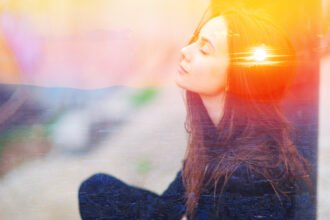When you have an urgent medical concern only to spend hours watching the clock in a dingy waiting room, frustration can skyrocket.
Being sick or in pain is hardly a recipe for a good mood, so when you add long wait times, uncommunicative staff, and unclear billing, it’s easy to see why many patients avoid going to the doctor altogether.
If you’re looking for a way to help your patients leave happy, you need to start with why they might leave upset. Here are the top five causes of patient dissatisfaction.
Sitting in the waiting room
Lengthy waiting room times are a staple of the American healthcare experience. Everyone has a gripe about spending an extra hour or two in those hard plastic chairs from sitcoms to talk shows.
Sitting idly and wondering when they’ll finally hear their name called is a constant source of frustration for clients. No matter how good your magazine or TV channel selection is, waiting will be a source of irritation for patients who didn’t come to your practice to sit and read magazines. Extended waiting times can make people less likely to visit in the future and more likely to leave negative online reviews.
Some hold-ups are unavoidable in a clinical setting, but that doesn’t mean you can’t be proactive. One innovative solution is using SMS-text messaging to remind patients of their appointment times and notify them of any delays in advance.
Excess time in the exam room
Nothing gets patients steaming faster than upgrading them from waiting in the reception area to waiting in the exam room. Many patients take off work for doctor’s appointments, so a lengthy exam room wait might tempt them to give up on the appointment altogether.
Very few patients enjoy healthcare visits. Sick and healthy patients alike are apprehensive about exams, procedures, and tests. Sitting alone in a paper gown listening to the clock tick is hardly a relaxing remedy for white coat anxiety, and it makes your practice look unprofessional.
If your practice is experiencing a staffing shortage and it’s starting to affect patient wait time, it may be time to hire more hands. Partnering with a staffing agency like Fusion Marketplace can provide a practical path to finding qualified candidates for forward-thinking healthcare providers.
Giving your patients prompt attention in the exam room isn’t always easy. Busy offices are often unavoidable, but you can’t let the clock tick too long once a patient is in the exam room. If you’re finding your office overwhelmed by daily appointments, hire support staff.
Prompt return of phone calls
When patients call a healthcare facility, it’s standard that they will have to leave a message for a provider. Busy facilities have personnel scrambling throughout their shifts. Catching up with messages and returning calls is often delayed until the end of the day or sometimes even longer.
That lack of a prompt response leaves patients feeling short-changed, especially as consumers grow used to instant access using phones or the Internet.
Online medical resources have perhaps created an unrealistic expectation of instantaneous responses, but waiting for a return call is still bound to annoy patients. That annoyance can grow to outright anger, so it’s essential to minimize callback time, even if it means hiring more staff.
Waiting for tests and results
If you’re noticing a theme that patients don’t like waiting, you’re correct. When it comes to tests, patients are dissatisfied on both the front and back ends. First, they wait for a doctor or nurse to collect samples, and then they wait for the results.
It’s not all impatience on the patients’ part. Waiting for test results can be nerve-wracking even when the test is for something minor.
When office waits become extreme, patients feel like the practice doesn’t value their time or feelings. And when subjected to delayed reporting of their results, patient minds are bound to start whirring with all the worst possibilities.
Finding Their Way
Arriving for a medical appointment might seem simple to people who work in healthcare facilities and visit them every day. The patient travels to your practice, parks their car or bike, and comes inside. Simple, right?
In reality, it’s more complicated. Where do patients park or get dropped off? What if the parking lot is already at capacity? Even if they arrive by other means, do they know where to go? If your office is in a suite with multiple providers, or you have multiple entrances, patients can spend time wandering around outside before their appointment.
Think about the steps they will need to take. Find the correct building, on the right floor, then finally the right office. By the time they get to the waiting room, they may have already asked for directions and studied building directories as though they’re on a scavenger hunt.
Try including detailed directions on your appointment confirmation messages and website.
The Bottom Line For Diagnosing Patient Dissatisfaction
Any healthcare practice must regularly measure patient satisfaction. Conducting a post-visit survey focused on the right questions will help you diagnose any persistent sources of dissatisfaction so that you can work to treat them.








